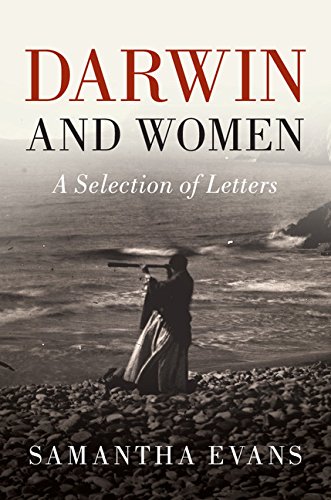by ANN KENNEDY SMITH
 IMAGE/Amazon
IMAGE/Amazon
Darwin and Women: A Selection of Letters by Samantha Evans, Cambridge University Press, 298 pp, £29.99
Men have had every advantage of us in telling their own story. The pen has been in their hands.
Anne Elliot, the heroine of Persuasion by Jane Austen, one of Darwin’s favourite authors
The difference between the “intellectual powers of the two sexes” was apparent, Charles Darwin confidently asserted towards the end of The Descent of Man, and Selection in Relation to Sex (1871). Whatever a man did, he did it better than a woman, therefore “the average standard of mental power in man must be above that of women”. Darwin’s statement that women were intellectually inferior to men was contentious in his own lifetime, and, unsurprisingly, has continued to be criticised ever since. As Samantha Evans, the editor of this new collection of letters points out, it was a strange thing for Darwin to write, given what he knew about the wide-ranging social disadvantages still faced by women: their lack of access to a good education, their exclusion from professional and political life and their continuing legal disenfranchisement. It was also surprising given the talented and active women he knew personally, and the many others he corresponded with.
This new book, Darwin and Women, throws light on the lives and work of the women with whom Darwin came into contact. It is a compilation of selected letters from the ongoing 30-volume Correspondence of Charles Darwin project (Cambridge University Press, with much available online for free*); to which have been added extracts from previously unpublished Darwin family letters held at Cambridge University Library. Darwin’s correspondence was huge, but this relatively slim volume has less than 300 pages, and fourteen short chapters. It is organised by theme rather than chronology, over a period from 1821 to 1882, the year of Darwin’s death. The topics covered in the letters include Austen-like details of family life, some eye-popping observations about animals and humans and serious discussions concerning religion, education and women’s rights. There is an illuminating foreword by Gillian Beer, author of the groundbreaking Darwin’s Plots (1983) who has recently awarded the prestigious Truman Capote prize for her study of Lewis Carroll.
Throughout his life Darwin was aided by the work of women, not just at home, where his wife Emma’s smooth running of the household and dealing with more routine correspondence allowed him to concentrate on matters that interested him, but in his scientific research. The chapters which deal with his childhood friends, family marriages and his own young children are charming, but the book really takes off in the middle section when it shines the spotlight on the women working in the fields of botany, entomology and education who corresponded with the great scientist. Victorian women were excluded from public debate, but could engage with Darwin directly by writing to him to discuss their scientific discoveries and share valuable information.
Dublin Review of Books for more
